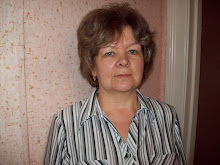
Nobody was hungry!
 We have found that...
We have found that...


 We have found that….
We have found that….A jack-o'-lantern (sometimes also spelled Jack O'Lantern) is typically a carved pumpkin. It is associated with the holiday Halloween, and was named after the phenomenon of strange light flickering over peat bogs - jack-o'-lantern. In a jack-o'-lantern, typically the top is cut off, and the inside flesh then scooped out; an image, usually a monstrous face, is carved onto the outside surface. At night a light is placed inside to illuminate the effect.
We cut horrible faces in the pumpkins and put candles inside.




Hello to all teachers and students in our group!
We are so excited taking part in the Christmas Card Exchange Project. We are getting out maps to find your locations and looking for information about your traditions in the Forum. Some of us bought Xmas cards and some others decided to make them by hand. We are going to send the cards in the mid of November.
Our Christmas cards are on the way.
This is what we have to say.
We wish you all a lot of cheer.
Not only for the holidays but for the whole year!










